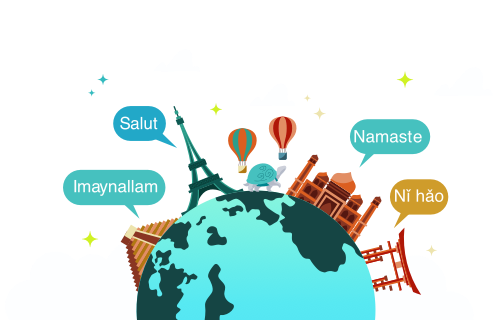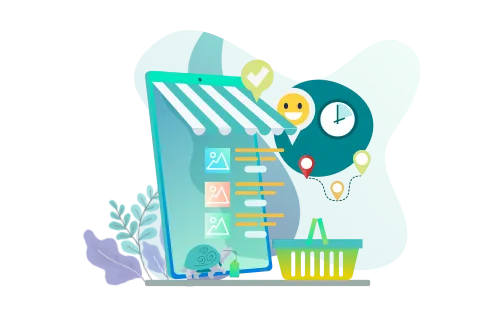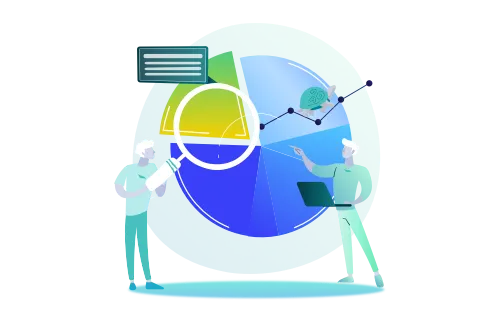Building a Shopify multiple languages store is a tempting prospect. Increased sales and a larger audience are just a few benefits guaranteed. But is Shopify localization that crucial?
The truth is, your customers are more likely to buy from a store they can easily understand. If your website isn’t in their native language, you’re missing out on a significant segment of potential buyers.
Our clients — including Paper Republic, Yara International, Kit & Kin, and many others — have overcome language barriers, which resulted in remarkable growth and higher customer satisfaction. Your Shopify store can achieve the same success with these crucial perks:
- Increased ROI. Translation and localization helped 96% of respondents surveyed by DeepL get a positive return on investment.
- Expanded reach. Native English speakers make up only about 5% of the global population, meaning other languages are just as important.
- Boosted sales. Nearly 40% of customers won’t buy products in languages other than their native ones.
- Improved customer retention. Unbabel’s 2023 survey found that 79% of marketers saw better customer retention simply by localizing their content.
The advantages are clear. Now, let’s explore how to add multiple languages to your Shopify store.
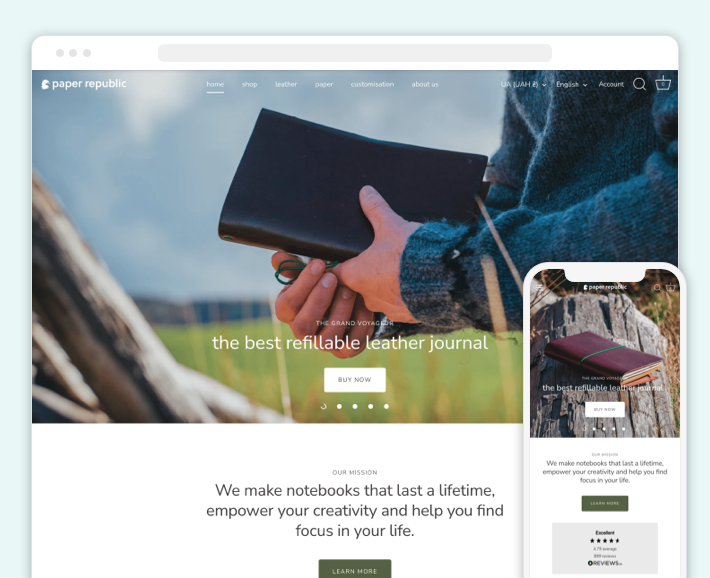
3 Ways to Build a Multi-Language Shopify Store
There are three viable ways of setting up a multi-language Shopify store. Let’s examine each method.
1. Use Shopify’s Native Translate and Adapt App
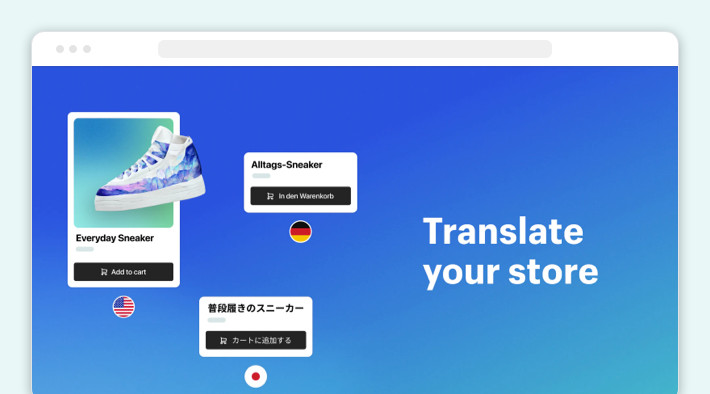
The Translate & Adapt app (a solution Shopify itself has developed!) is a user-friendly tool for creating a multilingual store. It lets you add translations to your product descriptions, collections, blog posts, policies, and other essential content.
With Translate & Adapt, you can translate content manually or automatically, adjust your messages to specific markets, and manage everything from the Shopify admin. And the best part is that this app works with other translation tools that use the Translations API.
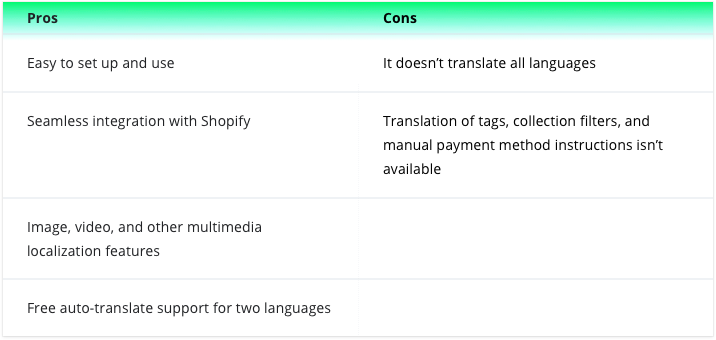
2. Try Other Apps from the Shopify App Store
The Shopify App Store features third-party translation apps like Weglot, Langify, GTranslate, and others. With their help, it‘s possible to translate a Shopify store in multiple languages, manage translations, and implement language-specific SEO optimization.
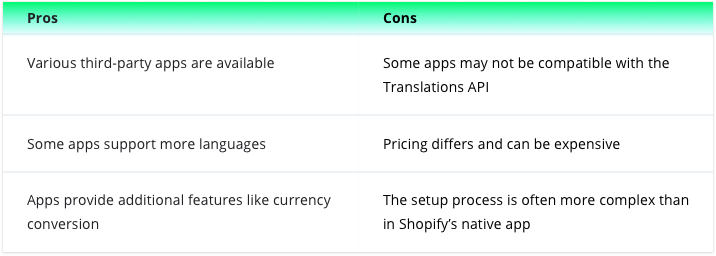
3. Set Up Multiple Stores on Shopify
For businesses with distinct target markets or complex language requirements, creating separate Shopify stores might be the best approach. You set up individual stores for each target market, with their URLs and localized content. It’s particularly beneficial if you have teams managing stores in different countries.
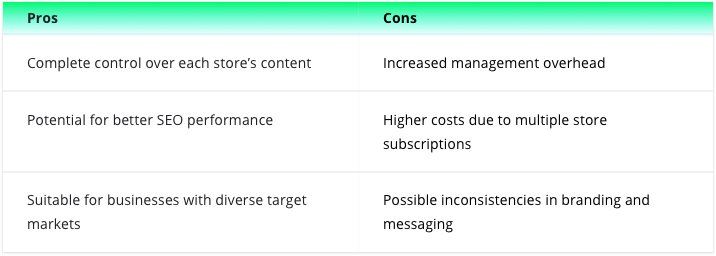
Why Translate and Adapt is Best for Multilingual Stores
After Shopify introduced the Translations API, the translation app market experienced significant changes. The new API enabled native translation support and made it easier for apps to integrate with Shopify.
Many translation apps now work with the Translations API (or are gradually switching to it). Therefore, choosing an application that fully supports the Translations API is your best bet for making your Shopify multilingual.
Find the complete list of apps that work with Shopify’s store languages here.
However, while numerous third-party apps are available on the Shopify App Store, Translate & Adapt is the preferred choice for several reasons. As a native Shopify solution, it seamlessly integrates with the platform. As a result, it benefits from ongoing improvements and feature updates directly from Shopify’s development team. It often means that new features, like translatable URL handles, become available before third-party alternatives.
Yet, if you’re willing to try out other translation apps, there are several alternatives:
Weglot

Weglot is a translation tool that focuses on ease of use and accuracy. It automatically detects and translates your store’s content and provides a visual editor for manual adjustments.
Key features include:
- Automatic translation with manual editing
- Multilingual SEO
- Support for over 110 languages
- Compatibility with all Shopify themes and apps
Langify
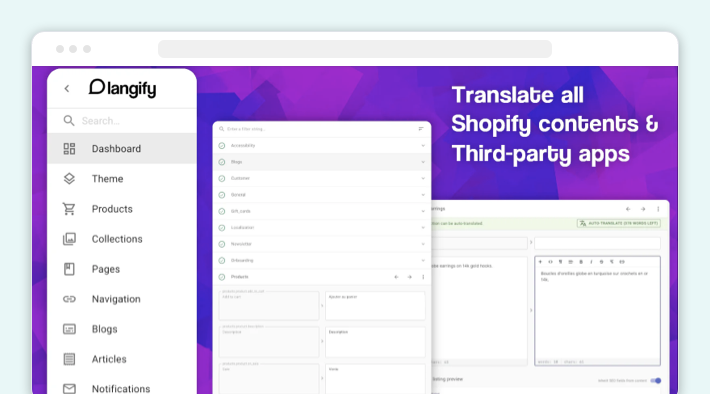
Langify is a top choice for Shopify merchants aiming to attract new customers by selling in their native languages. The app supports multiple languages and third-party integrations, letting you translate your entire store.
Key features include:
- Automatic and manual translation options
- Translations API support
- SEO optimization for translated content
- Customizable language switchers
- User-friendly interface
GTranslate
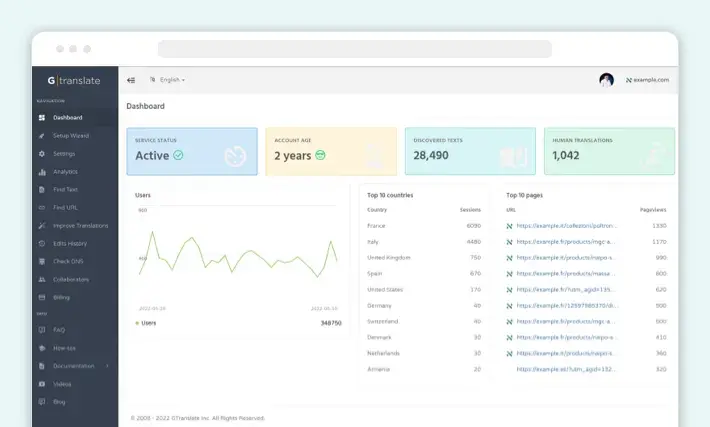
GTranslate uses Google Translate’s technology to provide fast and accurate translations for Shopify stores. It’s perfect if you strive to scale your Shopify store without dedicating much time and effort to manual translation.
Key features include:
- Unlimited automatic translations
- Easy installation and configuration
- URL translation
- Third-party app content translation
- Customizable language switchers
How Can You Provide a Fully Localized Experience to Customers
A decent multilingual Shopify store is more than mere translation. It’s a fully localized experience. Thus, your messages and other content meet your customers’ cultural and linguistic preferences.
Localizing different languages on Shopify might be challenging, though. You will likely have to deal with the following pitfalls:
- Cultural sensitivity. What works in one market might not be suitable for another. You need to be aware of cultural differences to avoid missteps.
- Accurate translation. Ensuring precise translation of all product descriptions, content, and user interfaces may be challenging. Miscommunications or errors in translation negatively impact customer experience.
- Consistent updates. Keeping all localized versions of your store up-to-date with the latest products and promotions requires careful coordination and is complex to manage.
- Local SEO. It’s quite challenging and resource-intensive to optimize your store for different search engines and keywords in each language.
Luckily, you can handle the above challenges with a thorough plan in place. Here are several tips for localizing your store like a pro:
- Choose the right tools. Use native solutions like Shopify’s Translate & Adapt or other Translations API-compatible apps.
- Update translations regularly. Make sure your translations reflect new content, product changes, and promotions.
- Display local units. Use the appropriate units of measurement (kilograms, pounds, centimeters, inches) for your target audience.
- Understand cultural differences. Adapt content to fit cultural norms and preferences, including images, color schemes, and product descriptions. Consider local holidays and traditions in your marketing campaigns.
- Optimize for local search engines. Use local keywords and phrases in product descriptions and meta tags to improve SEO for various regions. Create localized URLs to increase visibility in search results.
- Test and review regularly. Conduct user testing or gather customer feedback to ensure the localized versions of your store work correctly.
Shopify Internationalization: GenovaWebArt’s Experience
When developing new websites and custom Shopify solutions for our clients, we ensure multilingual support from the outset. Here’s how we make that possible:
- Planning. We identify target markets and define language requirements for each project.
- Technical implementation. We integrate multilingual solutions, like Translate & Adapt or third-party apps, into the store’s architecture.
- Future-proof design. We design with scalability in mind for projects with multilingual support planned for future expansion.
Besides just that, we provide external integration services, which include:
- Creating Shopify expansion stores with multilingual or multidomain support
- Integrating third-party apps and APIs for additional features like inventory or shipping
For example, we helped our client, Paper Republic, a manufacturer of handmade notebooks, refills, and leather journals, localize its Shopify store. We used the Translate & Adapt app to achieve this goal.
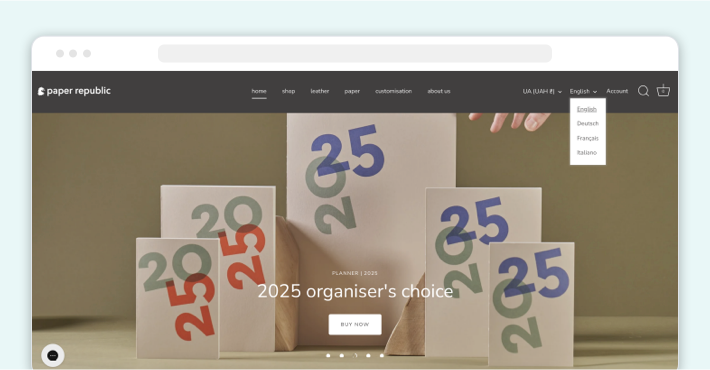
Another successful project involved Yara International, a crop nutrition company. For this client, we went beyond installing translation apps. We set up multiple Shopify stores with identical branding but tailored for different languages, currencies, and shipping options.
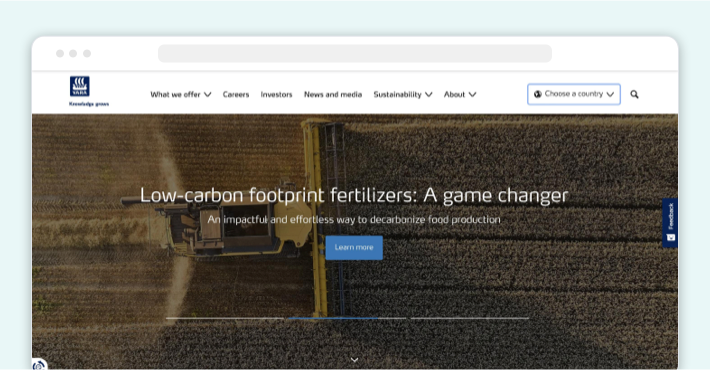
Want to see the results of other multilingual Shopify store projects? Check out our portfolio to learn how we enable selling in multiple languages Shopify.
Conclusion
Learning how to translate your Shopify store is a must if you aim to enter global markets. Reach customers in their native language to boost sales, increase ROI, and build stronger relationships. But remember, a successful multilingual store is more than just translation. It’s a culturally relevant shopping experience for every customer.
If you want to take your Shopify store global, GenovaWebArt is here to help. Contact us to discuss your multilingual goals.
Frequently Asked Questions
Can the Shopify store be translated into multiple languages without any code?
What languages do Shopify themes support?
- Install a suitable translation app,
- Set up language options,
- Provide translations for your store’s content,
- Optimize content for local search engines,
- Adjust the site’s design and functionality to local markets.
